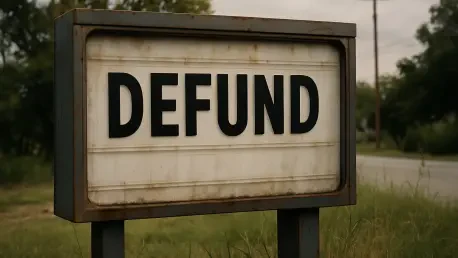In a dramatic showdown that could reshape the landscape of higher education, California Governor Gavin Newsom has drawn a line in the sand against a provocative Trump administration initiative dubbed the “Compact.” This federal proposal dangles the promise of priority research funding to select universities, but only if they agree to sweeping ideological and operational changes that many view as a direct assault on academic freedom. Newsom’s response has been unequivocal—threatening to yank billions in state funding from any California college that dares to sign on. This bold stance has ignited a firestorm of debate, pitting state autonomy against federal influence in a battle over the soul of American universities. As tensions rise, the stakes couldn’t be higher for institutions caught between securing vital resources and preserving their core values. The unfolding conflict reveals deep divisions over the role of higher education in society and raises critical questions about who ultimately controls its future.
Federal Proposal Ignites a Firestorm
The Trump administration’s Compact has emerged as a lightning rod in the higher education sector, targeting nine elite research universities, including the University of Southern California (USC). In exchange for prioritized federal funding, the deal demands drastic reforms such as adopting neutrality on non-campus issues, scrapping race, gender, or religious factors in admissions (with narrow exceptions), and capping international student enrollment at a mere 15%. Additional stipulations include freezing tuition for five years, reinstating standardized testing, and cracking down on campus protests with strict measures. These conditions are seen by many as an attempt to realign universities with conservative priorities, addressing long-standing criticisms of liberal bias in academia. The breadth of these requirements has sparked alarm, as they touch on nearly every facet of university operations, from governance to student life, prompting fears of unprecedented federal intrusion into spaces historically defined by independence.
Shifting away from earlier tactics of punitive actions like grant reductions or civil rights investigations, the Compact represents a calculated pivot to a reward-based strategy. By offering financial incentives, the administration aims to entice compliance rather than enforce it through penalties, a move that some analysts describe as a more sophisticated approach to policy influence. This “carrot over stick” method underscores a broader campaign to reshape higher education, focusing on areas like campus culture and admissions policies that have long been contentious. However, the allure of federal dollars comes with strings that many institutions find troubling, raising concerns about the erosion of autonomy. For universities already grappling with tight budgets, the temptation to secure funding is undeniable, yet the cost of surrendering control over fundamental principles looms large. This strategic shift has only deepened the divide between federal ambitions and the academic community’s commitment to self-governance.
Newsom’s Unyielding Stand Against Federal Overreach
Governor Gavin Newsom has positioned himself as a fierce guardian of California’s higher education system, vehemently rejecting the Compact as a “radical agreement” that betrays the essence of academic integrity. His pledge to withdraw billions in state funding, including access to Cal Grants—a crucial resource for low- and middle-income students—sends a clear message to any state college considering the federal deal. This financial threat is not merely rhetorical; it targets a lifeline for many institutions and students, amplifying the gravity of the decision facing California universities. Newsom’s rhetoric frames the Compact as an attack on students, faculty, and researchers, accusing the federal government of attempting to buy compliance at the expense of independent thought. His stance reflects a broader commitment to shield state institutions from what he perceives as coercive overreach, setting the stage for a high-stakes confrontation with federal authorities.
Beyond Newsom’s individual defiance, his position resonates with a chorus of disapproval from influential higher education organizations. Entities such as the American Association of Colleges and Universities (AAC&U), the American Federation of Teachers (AFT), and the American Council on Education (ACE) have decried the Compact as a blatant partisan maneuver to control university operations. These groups argue that the proposed conditions threaten to dismantle diversity, hinder global competitiveness, and stifle the open exchange of ideas that defines academia. The collective outcry emphasizes the risk of setting a dangerous precedent, where financial leverage could dictate educational values. Critics warn that accepting such terms might fragment the higher education community, creating a tiered system favoring compliant institutions. This unified resistance underscores the depth of concern over the Compact’s implications, aligning closely with Newsom’s protective approach to California’s academic landscape.
Varied Perspectives in the Academic Arena
While opposition to the Compact dominates much of the discourse, not all voices in higher education echo the same concerns. Kevin Eltife, chair of the University of Texas Board of Regents, has publicly welcomed the opportunity to engage with the federal proposal, describing the selection of the University of Texas at Austin as a point of pride. This enthusiasm suggests that some institutions may view the Compact as a strategic alignment with their interests, whether driven by financial needs or ideological compatibility. Eltife’s perspective introduces a wrinkle in the narrative of widespread resistance, hinting at potential divisions within the academic sector. For universities outside California, where state-level pushback may be less intense, the federal funding could outweigh the perceived drawbacks. This divergence highlights the complex calculus at play, where institutional missions and regional politics shape responses to federal policy in unexpected ways.
California colleges, particularly those like USC, find themselves at a critical juncture with no easy answers. Opting into the Compact might secure valuable federal resources, but it risks alienating state support, including Cal Grants, which sustain countless students’ access to education. The potential loss of state funding could cripple operational budgets and limit affordability for many, forcing administrators to weigh short-term gains against long-term stability. This dilemma is compounded by the need to uphold academic principles amid external pressures from both state and federal levels. For these institutions, the decision transcends mere finances, touching on their identity and responsibility to foster an inclusive, independent learning environment. The choices made in the coming months could redefine their standing within California’s higher education system, as well as their relationship with governmental powers vying for influence over their future.
Reflecting on a Pivotal Moment
Looking back, the clash over the Trump administration’s Compact marked a defining chapter in the struggle for control over American higher education. Governor Newsom’s resolute threat to defund California colleges that aligned with the federal proposal stood as a powerful statement of state sovereignty, while the broader academic community grappled with the implications of such a divisive policy. The varied responses, from staunch opposition to cautious interest, painted a picture of an industry at odds with itself, torn between survival and principle. Moving forward, the resolution of this conflict demanded careful dialogue between state leaders, university officials, and federal policymakers to find a balance that preserved academic freedom without sacrificing essential resources. Institutions needed to explore alternative funding models or coalitions to reduce reliance on contested federal or state dollars. Ultimately, the path ahead required a renewed commitment to protecting the integrity of higher education as a cornerstone of democratic society.









